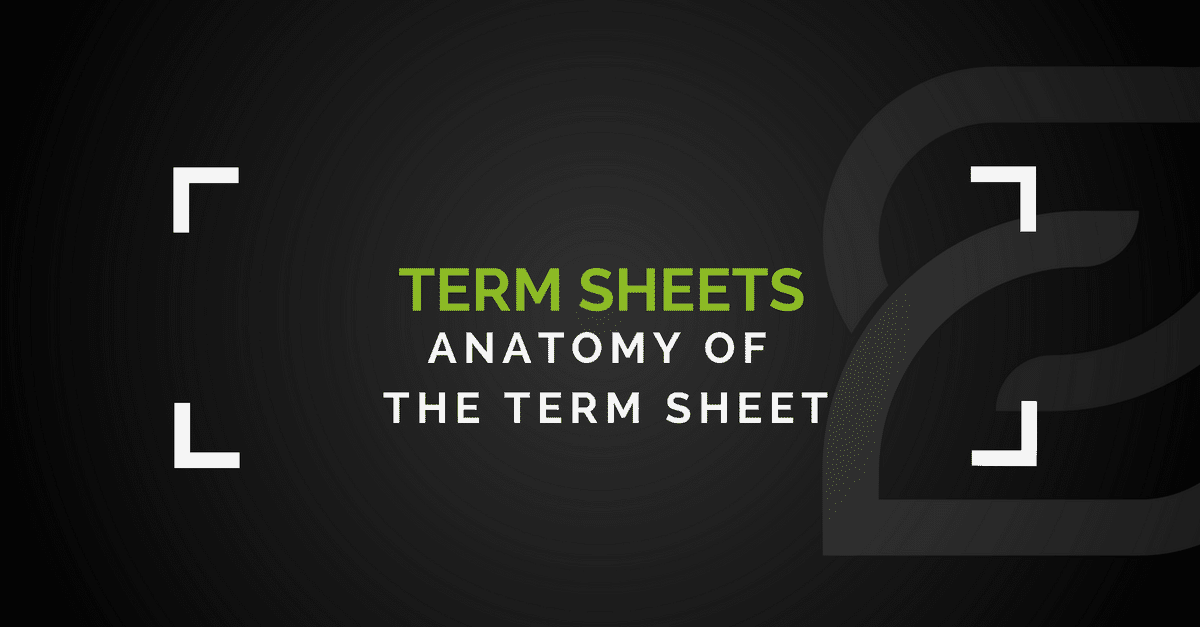The Anatomy Of Term Sheets

Being a deal maker, requires being part super networker, part financial wizard and part legal eagle. Nevertheless you don't need to do it all by yourself. For legal, you can get help from good lawyers. However, you do need to be familiar with the basic documentation that make deals happen. It's amazing how much you can do with a simple piece of paper with words and a signature!
During the process of dancing with your private equity friend, you may come across three types of legal documentation, the NDA or Non Disclosure Agreement (also called Confidentiality Agreement), the Term Sheet (also called Letter of Intent) and the Definitive Agreements (that include Share/Stock Purchase Agreement aka SPA or Asset Purchase Agreement aka APA and in some cases an Investment Agreement) and ultimately you may have other smaller agreements such as Employment Agreement drafted to incentivize your investee management team or the Financial Advisory (Management Consulting) Agreement drafted to make the private equity house some annual income.
We'll only go into detail with the Term Sheet as it forms the basis for the high level terms and conditions of a deal. This is where the art of deal making starts and you will get a feel of whether a deal will materialize, where the expectations of both parties are managed. Once both the private equity financier starts to tango with the founder, you will see how both mature into a serious buyer and seller. Like any negotiation, it will involve a bit of pulling and pushing. If you've reached this stage, you've reached far, but it ain't over till the fat lady sings... and with the Term Sheet, she's just started eating!
A Term Sheet (or Letter of Intent in legal parlance) usually provided by a private equity firm is a pre-acquisition / pre-funding agreement that shapes the understandings of both parties. The purpose of the Term Sheet is to outline the proposed transaction terms as well as indicate the value of the transaction.
Although usually non-binding (with the exception of No Shop/Exclusivity/Confidentiality), it serves as a bridge of good faith between the initial negotiation and the definitive agreements. Consider it a tool for facilitation. The Term Sheet sets spells out the preconditions to closing the deal, such as due diligence, price, payment terms, exclusivity, valuation and can get as complicated as you want depending on what stage you are at in your discussions. If all terms are agreed, the terms signed upon become a proxy and form the basis of the definitive agreements which are drafted by the lawyer.
Generally private equity firms will take the first move advantage of drafting the contract. This is a tactic we use with any agreement. It's costlier in terms of legal fees, but that's a part and parcel of being a financier. We'll get into more advanced discussions on the various terms and conditions, or what forms the anatomy of the term sheet, including but not limited to:
- Binding - Confidentiality
- Binding - Expenses
- Binding - Go Shop
- Binding - No Shop (Exclusivity)
- Binding - Non Compete (CNC)
- Board - Composition
- Board - Election
- Indemnification
- Legal - Fees
- Legal - Opinion
- Pay To Play
- Preference - Liquidation
- Preference - Participation
- Preference - Dividend
- Provisions - Protective
- Provisions - Lock up
- Representation & Warranties
- Right - Anti Dilution Rights
- Right - Drag Along Rights
- Right - Conversion Rights
- Right - Future Rights
- Right - Information Rights
- Right - Management Rights
- Right - Pre-emptive Rights
- Right - Redemption Rights
- Right - Registration Rights
- Right - Right of First Refusal (ROFR)
- Right - Right of First Offer (ROFO)
- Right - Tag Along Rights
- Right - Voting Rights
- Valuation
- Vesting
Although the above may sound like greek or latin to some fresh entrepreneurs, the fact remains that the Term Sheet consists of many moving parts, for which valuation is just one part of the equation. (And btw here's something from the trenches: we bankers never quote a hard and fast valuation at the beginning, its always a "range". Counter tip to deal with us: Never use the word "between" instead use "above" when discussing valuation.)
If you'd like to learn more, sign up for my newsletter and once you get my email - hit reply to remind me.

Member discussion